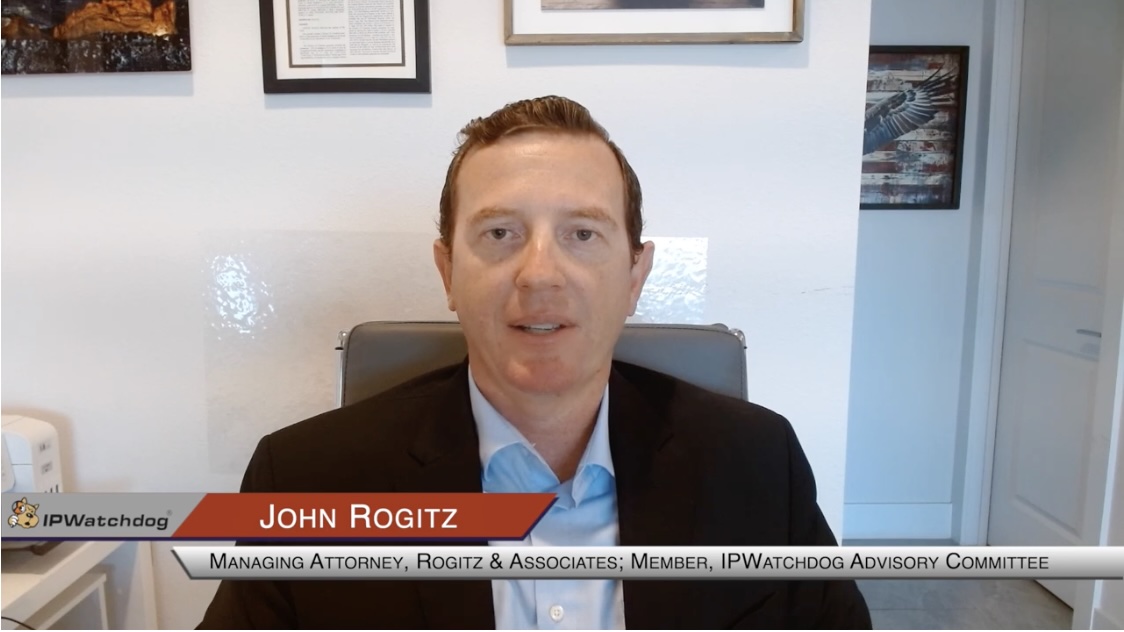“Without judicial intervention, “printed publication” risks becoming a malleable term shaped by agency convenience rather than statutory command.”
 For the past five years, I have taught Legislation & Regulation at Oklahoma City University School of Law—a course at the crossroads of administrative law, statutory interpretation, and the legislative process. Each semester, my students and I return to a central inquiry: when, if ever, should courts defer to agency interpretations, and when must judges exercise their own independent judgment? That question has taken on new urgency in the wake of the Supreme Court’s recent restructuring of administrative law.
For the past five years, I have taught Legislation & Regulation at Oklahoma City University School of Law—a course at the crossroads of administrative law, statutory interpretation, and the legislative process. Each semester, my students and I return to a central inquiry: when, if ever, should courts defer to agency interpretations, and when must judges exercise their own independent judgment? That question has taken on new urgency in the wake of the Supreme Court’s recent restructuring of administrative law.
Loper Bright and the New Administrative Law Landscape
When the Supreme Court issued Loper Bright Enterprises v. Raimondo last year—explicitly rejecting the Chevron doctrine and directing courts to interpret statutes independently—it marked a transformational moment in administrative law. But nearly a year later, the Court has provided almost no guidance on how Loper Bright should operate in practice. That silence leaves lower courts, practitioners, and legal educators without real examples to illuminate what judicial interpretation should look like in a post-Chevron world.
That gap is what prompted me to submit an amicus brief in Lynk Labs, Inc. v. Samsung Co. Ltd., urging the Court to take the case. Although Lynk Labs emerges from the patent system, the question it raises is universal: may a court quietly bypass Loper Bright by adopting an agency’s policy preferences over the statute’s actual text?
In Lynk Labs, the Federal Circuit relied heavily on the U.S. Patent and Trademark Office’s (USPTO’s) policy-driven interpretation of the statute’s scope—particularly the meaning of “printed publication” in 35 U.S.C. § 311(b). While the court purported to interpret statutory language, its reasoning closely tracked agency policy rather than judicial precedent. In effect, the court revived a form of Chevron-like deference without calling it that. By letting USPTO policy—not long-settled judicial meaning—control the definition of “printed publication,” the Federal Circuit blurred the Constitution’s separation between interpreting the law and executing it.
This is not a trivial misstep. It strikes at the very heart of Loper Bright, which reaffirmed that courts—not agencies—must say what the law is. Yet the Federal Circuit’s reasoning reveals how deeply Chevron’s instincts still linger. Instead of grounding its analysis in statutory text or longstanding precedent, the court embraced the USPTO’s view that treating confidential, abandoned patent filings as “printed publications” serves administrative efficiency. But confidential abandoned applications are widely regarded as low-quality and unreliable prior art—and more importantly, efficiency is not a constitutional metric.
The Administrative Procedure Act and the separation of powers exist precisely to prevent convenience from overtaking legality. When a court adopts an agency’s policy rationale as the basis for statutory interpretation, administrative convenience becomes a substitute for judicial reasoning. This “deference by imitation,” as I describe in my brief, reintroduces Chevron through subterfuge—deferring not to what agencies say the law is, but to what agencies wish the law were. The danger is structural: when courts begin aligning with agency preferences rather than statutory text, they abandon their duty of independent judgment.
If this pattern is left unchecked, judicial interpretation will increasingly become an extension of agency policymaking rather than a neutral application of statutory law. Lynk Labs offers a clear illustration. The Federal Circuit took a term with more than a century of stable meaning—“printed publication” as publicly accessible information—and stretched it to encompass documents that were secret at the relevant time. That expansion rewrites the statute and undermines the fair notice essential to the integrity of the patent system.
The Court should seize this opportunity to clarify Loper Bright’s reach. Overruling Chevron was only the first step; unless the Court provides concrete examples of how the new regime works, lower courts may continue to revive Chevron’s approach under new labels. The Supreme Court can and should reaffirm that agency policy concerns and administrative goals cannot overshadow statutory text.
This makes Lynk Labs particularly timely. Loper Bright has already caused significant recalibration across regulatory fields—from environmental oversight to tax enforcement to intellectual property—with expectations of increased challenges to agency actions. And in an era increasingly shaped by artificial intelligence, where regulators grapple with rapid technological change, the need for clear statutory interpretation is only growing. Legislative clarity and judicial independence will be crucial in guiding AI-era governance.
Against this backdrop, Lynk Labs provides the Court with a meaningful vehicle for charting the boundaries of judicial interpretation in a post-Chevron world.
Why ‘Printed Publication’ Matters
The meaning of “printed publication” is not a minor technicality—it is foundational to the functioning of the patent system. Courts have long interpreted “printed publication” to require public accessibility before a critical date. This ensures that inventors can assess prior art and make informed decisions about whether to pursue a patent. But the Federal Circuit’s approach upends this settled understanding.
By treating confidential, abandoned applications—documents never available to the public when the invention was made—as “printed publications,” the Federal Circuit destabilized a century of consistent judicial interpretation. A rule once grounded in public notice has been transformed into a rule dictated by USPTO disclosure practices. This change effectively creates “invisible prior art,” opening the door for patents to be invalidated by information inventors could not possibly have discovered.
Such a shift undermines core patent-law values. The patent system depends on predictability. Innovators must know what the prior-art landscape looks like before investing resources into research and development. If secret materials locked in an agency’s files can later surface and invalidate a patent, the system ceases to function as a reliable driver of innovation. Fair notice disappears.
The Federal Circuit’s approach also conflicts with the Supreme Court’s repeated insistence on textual fidelity in patent cases. In Helsinn, Return Mail, SAS Institute, and Microsoft v. i4i, the Court rejected policy-driven reinterpretations of statutory terms. The Court has made clear that Congress legislates using well-settled terms—and that agencies cannot revise those meanings through policy or convenience.
Yet, under the Federal Circuit’s reasoning, the USPTO’s internal processes now shape the meaning of a statutory term. Whether an abandoned application remains confidential or is made public years later directly affects inventors’ rights—even though these timelines reflect administrative decisions, not legislative ones. This is precisely the kind of executive aggrandizement the separation of powers is meant to prevent.
Furthermore, the USPTO already holds an unusual concentration of roles: examiner, adjudicator, and policymaker. Allowing the agency to influence statutory meaning based on workflow preferences further collapses these functions, granting the USPTO a degree of interpretive power the Constitution does not permit.
Without judicial intervention, “printed publication” risks becoming a malleable term shaped by agency convenience rather than statutory command.
Looking Forward
As a scholar, teacher, and former practitioner, I submitted this brief hoping the Court will provide the guidance that the legal community urgently needs after Loper Bright. Law develops through concrete application, not abstract aspiration. Our students, courts, and constitutional structure depend on clarity.
In this moment of transition—both in administrative law and in rapidly evolving technological domains like AI—clear judicial interpretation is essential. Lynk Labs gives the Supreme Court an important opportunity: to demonstrate how Loper Bright should function, to reinforce the judiciary’s constitutional role, and to ensure that statutory meaning is anchored where it belongs—in the text enacted by Congress.
The Constitution entrusts the courts, not agencies, with saying what the law is. It is time for the Court to show what that means in practice.
Image Source: Deposit Photos
Image ID: 6496641
Copyright: stuartmiles

![[IPWatchdog Logo]](https://ipwatchdog.com/wp-content/themes/IPWatchdog%20-%202023/assets/images/temp/logo-small@2x.png)

![[Advertisement]](https://ipwatchdog.com/wp-content/uploads/2025/11/Ankar-AI-Nov-20-2025-sidebar-700x500-1.jpg)
![[Advertisement]](https://ipwatchdog.com/wp-content/uploads/2025/11/Junior-AI-Nov-25-2025-sidebar-700x500-1.jpg)
![[Advertisement]](https://ipwatchdog.com/wp-content/uploads/2025/11/Juristat-Ad-Firm-Cost-Management-Nov-18-Dec-31-2025-Animated-Varsity-Ad-final.gif)







![[Advertisement]](https://ipwatchdog.com/wp-content/uploads/2021/12/WEBINAR-336-x-280-px.png)
![[Advertisement]](https://ipwatchdog.com/wp-content/uploads/2021/12/Ad-4-The-Invent-Patent-System™.png)






Join the Discussion
No comments yet. Add my comment.
Add Comment